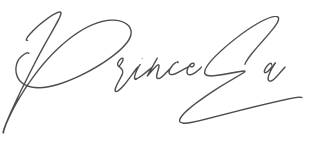Every Breath You Take Alters Your Visual Perception

You go through life assuming that what you see is fixed, that your eyes capture the world as it is. But what if your perception wasn’t constant? What if, with every breath you take, the way you see the world subtly shifts?
Recent discoveries reveal that breathing isn’t just about keeping you alive—it’s shaping how your brain processes reality. Each inhale sharpens your focus, helping you catch fine details. Each exhale broadens your awareness, allowing you to take in the bigger picture. And yet, most of us move through life unaware of this hidden rhythm, never realizing the power we hold in something as simple as our breath.
But what happens when we do? What if we could use this connection to enhance focus, reduce stress, and even improve decision-making? Understanding this link is the first step. Learning to control it could change the way you experience the world.
Let’s take a breath and explore.
The Science Behind Breath and Vision

For centuries, breath has been linked to states of mind—calm, focus, and even enlightenment. But recent research reveals that the connection goes deeper than we ever imagined. Scientists have discovered that the way we breathe directly influences how our brain processes visual information, altering the way we see the world around us in real time. This means that something as simple as inhaling and exhaling could subtly shift perception, attention, and even reaction speed.
A study conducted by neuroscientists found that during inhalation, the brain experiences a surge of neural activity, briefly enhancing visual perception. In other words, when you take a breath in, your mind becomes more alert, better at detecting subtle details in your surroundings. On the other hand, exhaling has the opposite effect—it relaxes the brain, momentarily reducing its focus on minute details and allowing for a broader, more generalized view. This cycle happens continuously, affecting perception in ways we’ve never consciously noticed.
What makes this discovery so profound is that it suggests our vision isn’t a fixed ability but a constantly shifting experience, tied to an internal rhythm we rarely pay attention to. We often think of sight as an external process, determined by the eyes and the light around us. But in reality, perception is a deeply internal experience, shaped by the natural cycles of the brain and body. This revelation adds to a growing body of evidence showing that breath is more than just a biological necessity—it’s a tool that shapes cognition, emotion, and now, even vision.
While the link between breathing and mental states has long been recognized in practices like meditation and yoga, this study provides hard scientific proof of something ancient traditions have intuitively understood. It confirms that breath is not just about sustaining life; it plays an active role in shaping how we interact with reality. But why does this happen? And what does it mean for our everyday experiences? To answer that, we need to look at the brain’s natural rhythms and how breath acts as a conductor in this symphony of perception.
How This Affects Your Daily Life

If every breath subtly shifts how we perceive the world, then our state of mind, focus, and even decision-making may be more influenced by our breathing patterns than we ever realized. This means that something as simple as being mindful of our breath could enhance performance in areas we rarely associate with respiration—sports, driving, creativity, and even social interactions.
Consider an athlete about to make a split-second decision in a game. If inhalation enhances perception and quickens reaction time, could training breath control give competitors an edge? Many elite athletes already practice controlled breathing to steady their nerves and sharpen focus, and this new research suggests that their training may be influencing their brain’s ability to process visual cues in real time. Similarly, drivers navigating busy streets or professionals making high-stakes decisions might be able to improve their situational awareness simply by aligning their breath with moments requiring heightened attention.
Even in everyday moments, breath may be shaping how we respond to the world. Have you ever noticed that stressful situations often cause shallow, rapid breathing? That’s not just a response to anxiety—it’s a shift in brain function that alters perception, making details seem sharper and time appear to slow down. Conversely, deep exhalations signal relaxation, broadening perception and helping us take in the bigger picture. This could explain why people who practice mindful breathing report feeling more present and aware in their daily lives.
Breathing Techniques to Improve Focus and Awareness
Now that you know your breath is shaping how you see the world, the next step is learning how to use it to your advantage. The good news? You don’t need years of training or complex techniques—just a few simple breathing exercises can help you sharpen focus, expand awareness, and even improve decision-making.
1. The focused inhale – sharpening perception
Before a high-focus task—whether it’s speaking in public, making a quick decision, or reacting in a fast-paced environment—take a few deep, intentional breaths in through your nose. Hold for a moment, then exhale slowly. This primes your brain for heightened awareness, making you more alert and ready to respond.
2. The grounding exhale – expanding awareness and reducing stress
When you need to calm your mind and take in the bigger picture, extend your exhalations. Try the 4-7-8 breathing technique: inhale for four seconds, hold for seven, then exhale for eight. This activates your parasympathetic nervous system, reducing stress while allowing your brain to process more of your surroundings without tunnel vision.
3. Box breathing – balancing focus and relaxation
Used by Navy SEALs and high-performance professionals, box breathing helps regulate focus under pressure. Breathe in for four seconds, hold for four, exhale for four, and hold again for four. This method keeps your nervous system balanced, helping you stay clear-headed while maintaining both sharp focus and situational awareness.
4. Breath awareness – noticing the shift in your perception
One of the simplest but most powerful techniques is simply paying attention to your breath throughout the day. Notice how you breathe when you’re stressed versus when you’re relaxed. Observe how your perception shifts with each inhale and exhale. By becoming more conscious of this natural rhythm, you can start to sync your breathing with moments that require either sharper focus or a calmer, more expansive view.
Your breath is more than just a reflex—it’s a tool. And once you learn to control it, you’ll start to see the world in a whole new way.
Seeing the World with Greater Clarity
Every breath you take is more than just an exchange of oxygen—it’s a silent force shaping how you perceive the world. Inhalation sharpens focus, making details stand out. Exhalation expands awareness, helping you see the bigger picture. This rhythm happens automatically, but the moment you start paying attention, you gain a level of control most people never tap into.
Science has confirmed what ancient wisdom has long understood: breath is a bridge between body and mind, between external reality and internal perception. By regulating it, you’re not just calming your mind—you’re actively shaping your awareness. A steady breath can sharpen your focus, reveal overlooked opportunities, and help you navigate challenges with greater clarity.
Try it for yourself. The next time you’re overwhelmed, notice your breath. If it’s short and shallow, your vision may feel tense and narrow. Slow it down. Take a deep inhale, hold, then exhale longer than you inhaled. See how the world looks when you breathe with intention—because the way you breathe is the way you see. And once you master it, you’ll never look at the world the same way again.
Featured Image Source: Shutterstock
Sources:
- Schaefer, M., Mathôt, S., Lundqvist, M., Lundström, J. N., & Arshamian, A. (2025). The pupillary respiratory‐phase response: pupil size is smallest around inhalation onset and largest during exhalation. The Journal of Physiology. https://doi.org/10.1113/jp287205
Loading...






